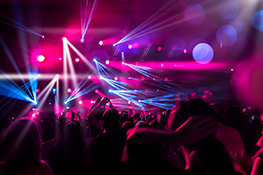The Ultimate Guide to Stage Lighting for Theatre Productions
Understanding the Fundamentals of Stage Lighting
Stage lighting is more than just illuminating the actors; it’s a powerful storytelling tool. This guide delves into the essential elements, techniques, and technologies used to create captivating theatrical experiences. We’ll explore everything from basic principles to advanced strategies, empowering you to design and implement stunning lighting designs for your next production.
Types of Stage Lighting Instruments
A diverse range of lighting instruments caters to specific needs. Understanding their unique capabilities is crucial. This section covers:
- Fresnels: Known for their soft, even wash, Fresnels are versatile and ideal for highlighting actors and scenery.
- Ellipsoidals (LEOs): Offering precise control and sharp beams, Ellipsoidals are perfect for creating gobos (projected patterns) and highlighting specific areas.
- PAR Cans: Powerful and widely used for wash lighting, PAR Cans offer a broad beam spread suitable for large areas.
- Profile Spotlights: Similar to Ellipsoidals but often featuring a simpler design and less precise beam shaping.
- LED Lighting: Energy-efficient and versatile, LED lights offer a wide spectrum of color options and enhanced control.
Color Mixing and Gel Filters
Color significantly impacts mood and atmosphere. Learn how to effectively mix colors using various lighting instruments and gel filters. We’ll discuss:
- Color Temperature: Understanding Kelvin (K) and its effect on the perceived warmth or coolness of light.
- Gel Filters: Choosing the right gel to achieve a specific color and its impact on light intensity.
- Additive and Subtractive Color Mixing: Mastering these techniques for creating a wide range of hues.
Lighting Design Principles and Techniques
Effective lighting design is a blend of art and science. We’ll explore key principles and techniques:
- Motivated Lighting: Creating a believable and realistic lighting scheme that reflects the natural light sources within the play’s setting.
- Key Light, Fill Light, and Back Light: Understanding the three-point lighting system and how to manipulate it for dramatic effect.
- Color Psychology in Lighting: Using color to evoke specific emotions and moods.
- Special Effects: Exploring the use of gobos, moving lights, and other effects to enhance the production.
Lighting Consoles and Control
Modern lighting consoles provide sophisticated control over complex lighting schemes. This section covers:
- Types of Lighting Consoles: Comparing different types of consoles and their functionalities.
- Programming and Cueing: Learn the basics of programming lighting cues and creating dynamic lighting sequences.
- Troubleshooting and Maintenance: Addressing common issues and ensuring the longevity of your lighting equipment.
Safety and Regulations in Stage Lighting
Safety is paramount in any theatrical production. This section highlights essential safety practices and relevant regulations.
- Electrical Safety: Understanding the risks of working with electricity and adopting safe practices.
- Rigging Safety: Properly hanging and securing lighting instruments.
- Compliance with Industry Standards: Adhering to relevant safety codes and regulations.
Advanced Techniques and Trends in Stage Lighting
Explore cutting-edge techniques and emerging trends in stage lighting.
- Moving Lights: Utilizing moving lights for dynamic and visually stunning effects.
- LED Technology Advancements: Exploring the latest advancements in LED lighting technology.
- Integration with other Technologies: Combining lighting with video and other technologies to create immersive experiences.
Conclusion
Mastering stage lighting is a journey of continuous learning and experimentation. By understanding the fundamentals, embracing innovative techniques, and prioritizing safety, you can elevate your theatrical productions to new heights. Stagelights.in is here to support your journey every step of the way.


 Auditorium Construction Services
Auditorium Construction Services 